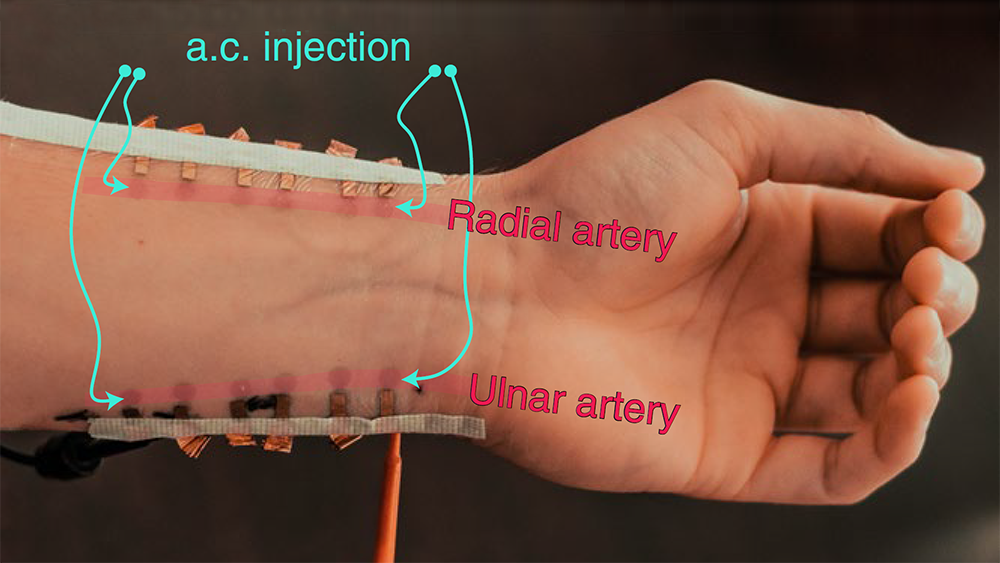Worn on wrist, this e-tattoo works as non-stop blood-pressure monitor

Researchers at Texas A&M University and The University of Texas at Austin have developed an electronic tattoo that can be worn comfortably on the wrist for hours and deliver continuous blood pressure measurements at an accuracy level that exceeds most available options on the market.
“Taking infrequent blood pressure measurements has many limitations, and it does not provide insight into exactly how our bodies are functioning,” said Roozbeh Jafari, professor of biomedical engineering, computer science and electrical engineering at Texas A&M and the co-leader of the project.
Blood pressure is the force of blood pushing against the walls of arteries. As blood flows to the arteries, they expand to let it through. Hypertension, or high blood pressure, happens when the force is too great or the arteries don’t expand enough.
High blood pressure can lead to serious heart conditions if left untreated. It can be hard to capture with a traditional blood pressure check because it only measures that exact moment in time, a single data point.
“Blood pressure is the most important vital sign you can measure, but the methods to do it outside of the clinic passively, without a cuff, are very limited,” said Deji Akinwande, a professor in the Department of Electrical and Computer Engineering at UT Austin and one of the co-leaders of the project, which is documented in a new paper published on June 20, 2022, in Nature Nanotechnology.
The continuous monitoring of the e-tattoo allows for blood pressure measurements in all kinds of situations: at times of high stress, while sleeping, exercising, etc. It can deliver hundreds and thousands of measurements more than any device thus far.
Mobile health monitoring has taken major leaps in recent years, primarily due to technology like smartwatches. These devices use metallic sensors that get readings based on LED light sources shined through the skin.
“All this data can help create a digital twin to model the human body, to predict and show how it might react and respond to treatments over time,” Akinwande said.
However, leading smartwatches aren’t yet ready for blood pressure monitoring. That’s because the watches slide around on the wrist and may be far from arteries, making it hard to deliver accurate readings. And the light-based measurements can falter in people with darker skin tones and/or larger wrists.
The e-tattoo makes sense as a vehicle for mobile blood pressure monitoring because it resides in a sticky, stretchy material that is comfortable to wear and doesn’t slide around. The is a very thin layer of carbon, named graphene, similar to what we see in graphite or pencils, but the atoms are precisely placed next to each other to form one to a few atomic layers.
“The sensor for the tattoo is weightless and unobtrusive; you place it there, you don’t even see it and it doesn’t move. You need the sensor to stay in the same place because if you happen to move it around, the measurements are going to be different,” Jafari said.
The device takes its measurements by shooting an electrical current into the skin and then analyzing the body’s response, which is known as bioimpedance. There is a correlation between bioimpedance and changes in blood pressure that has to do with blood volume changes. However, the correlation is not particularly obvious, so the team had to create a machine-learning model to analyze the connection to get accurate blood pressure readings.

